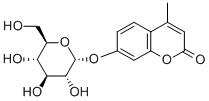Biochemical Engineering
- • Amino Acids and Proteins (221)
- • Nucleic Acid Drugs (18)
- • Enzymes and Coenzymes Drugs (115)
- • Inhibitors (1083)
- • Biological Response Modifiers (15)
- • Fat Medicines (7)
- • Amino Acids and Derivatives (4144)
- • Saccharides (2371)
- • Biochemical Reagents (322)
- • Nucleoside Drugs (346)
- • Condensing Agent (40)
- • Polypeptide (619)
- • Biosynthetic Natural Products (105)
- • Plant Extracts (813)
- • Chinese Herbs (352)
- • Microbiology Reagents (11)
- • Protein Research (34)
- • Lipids (281)
- • Inflammation Mediators (128)
Related News
-
In 2023, the international food price index fell nearly 14% YoY , and only the price index of sugar and rice rose
2024-01-10 -
Shanghai Takes the Lead in Curbing Sugary Beverage Consumption with Innovative Health Warning Labels
2023-10-19 -
Russia's Penza prefecture exported more than 1,500 tons of beet slag to China
2023-03-28 -
Bulgaria plans to introduce regulations on sugar consumption requirements
2022-12-23 -
High sugar prices in Bangladesh show no signs of abating
2022-12-14 -
How Does Sugar React With Vinegar? Vinegar And Sugar, Unlikely Couple
2022-12-09
Saccharides
Get Saccharides Raw Materials by Region4-Methylumbelliferyl α-L-arabinopyranoside
(69414-26-2)-
-
![4-METHYLUMBELLIFERYL ALPHA-L-ARABINOPYRANOSIDE buy 4-METHYLUMBELLIFERYL ALPHA-L-ARABINOPYRANOSIDE]()
Industrial Grade / 99%
-
![4-methylumbelliferyl alpha-l-arabinopyranoside buy 4-methylumbelliferyl alpha-l-arabinopyranoside]()
-
![4-METHYLUMBELLIFERYL ALPHA-L-ARABINOPYRANOSIDE buy 4-METHYLUMBELLIFERYL ALPHA-L-ARABINOPYRANOSIDE]()
Request for quotation , get quotes from more suppliers.
-
-
![4-Methylumbelliferyl-N-acetyl-beta-D-galactosaminide hydrate buy 4-Methylumbelliferyl-N-acetyl-beta-D-galactosaminide hydrate]()
IndustrialGrade / 99.00%
-
![4-Methylumbelliferyl-N-acetyl-beta-D-galactosaminide hydrate buy 4-Methylumbelliferyl-N-acetyl-beta-D-galactosaminide hydrate]()
-
![4-Methylumbelliferyl-N-acetyl-beta-D-galactosaminide hydrate buy 4-Methylumbelliferyl-N-acetyl-beta-D-galactosaminide hydrate]()
Request for quotation , get quotes from more suppliers.
4-Methylumbelliferyl β-cellobioside
(72626-61-0)-
Pharmacy Grade / 99%
-
-
![4-METHYLUMBELLIFERYL-BETA-D-CELLOBIOPYRANOSIDE buy 4-METHYLUMBELLIFERYL-BETA-D-CELLOBIOPYRANOSIDE]()
Industrial Grade / 99%
-
![4-Methylumbelliferyl-beta-D-cellobioside buy 4-Methylumbelliferyl-beta-D-cellobioside]()
Request for quotation , get quotes from more suppliers.
4,6-O-Ethylidene-α-D-glucopyranose
(13224-99-2)-
- / 99%
-
![4,6-O-Ethylidene-alpha-D-glucose buy 4,6-O-Ethylidene-alpha-D-glucose]()
Industrial Grade / 99.0%
-
![4,6-O-Ethylidene-alpha-D-glucose buy 4,6-O-Ethylidene-alpha-D-glucose]()
-
![4,6-O-Ethylidene-alpha-D-glucose buy 4,6-O-Ethylidene-alpha-D-glucose]()
Request for quotation , get quotes from more suppliers.
4-Methylumbelliferyl α-D-mannopyranoside
(28541-83-5)-
-
![4-METHYLUMBELLIFERYL BETA-D-MANNOPYRANOSIDE CAS NO 28541-83-5 buy 4-METHYLUMBELLIFERYL BETA-D-MANNOPYRANOSIDE CAS NO 28541-83-5]()
Industrial Grade, Feed Grade, Food Grade, Pharma Grade / 99%
$11.11/KG EXW
-
![4-methylumbelliferyl beta-D-mannopyranoside buy 4-methylumbelliferyl beta-D-mannopyranoside]()
-
![4-METHYLUMBELLIFERYL BETA-D-MANNOPYRANOSIDE buy 4-METHYLUMBELLIFERYL BETA-D-MANNOPYRANOSIDE]()
Industrial Grade / 99%
Request for quotation , get quotes from more suppliers.
4-Methylumbelliferyl α-D-glucopyranoside
(17833-43-1)-
-
![4-METHYLUMBELLIFERYL-ALPHA-D-GLUCOPYRANOSIDE HYDRATE buy 4-METHYLUMBELLIFERYL-ALPHA-D-GLUCOPYRANOSIDE HYDRATE]()
Industrial Grade / 99.0%
-
![4-methylumbelliferyl-alpha-D-glucopyranoside hydrate buy 4-methylumbelliferyl-alpha-D-glucopyranoside hydrate]()
-
![4-METHYLUMBELLIFERYL-ALPHA-D-GLUCOPYRANOSIDE HYDRATE buy 4-METHYLUMBELLIFERYL-ALPHA-D-GLUCOPYRANOSIDE HYDRATE]()
Request for quotation , get quotes from more suppliers.
4-Methylumbelliferyl α-L-fucopyranoside
(54322-38-2)-
-
![4-METHYLUMBELLIFERYL-ALPHA-L-FUCOPYRANOSIDE buy 4-METHYLUMBELLIFERYL-ALPHA-L-FUCOPYRANOSIDE]()
Industrial Grade / 99%
-
![4-methylumbelliferyl-alpha-l-fucopyranoside buy 4-methylumbelliferyl-alpha-l-fucopyranoside]()
-
![4-METHYLUMBELLIFERYL-ALPHA-L-FUCOPYRANOSIDE buy 4-METHYLUMBELLIFERYL-ALPHA-L-FUCOPYRANOSIDE]()
Request for quotation , get quotes from more suppliers.
4-NITROPHENYL-ALPHA-L-ARABINOFURANOSIDE
(6892-58-6)-
- / 99.00%
-
-
![4-NITROPHENYL-ALPHA-L-ARABINOFURANOSIDE buy 4-NITROPHENYL-ALPHA-L-ARABINOFURANOSIDE]()
Industrial Grade / 99%
-
![4-NITROPHENYL A-L-ARABINOFURANOSIDE buy 4-NITROPHENYL A-L-ARABINOFURANOSIDE]()
Request for quotation , get quotes from more suppliers.
4-METHYLUMBELLIFERYL BETA-D-MANNOPYRANOSIDE
(67909-30-2)-
![4-METHYLUMBELLIFERYL BETA-D-MANNOPYRANOSIDE buy 4-METHYLUMBELLIFERYL BETA-D-MANNOPYRANOSIDE]()
Industrial Grade / 99%
-
![4-METHYLUMBELLIFERYL BETA-D-MANNOPYRANOSIDE buy 4-METHYLUMBELLIFERYL BETA-D-MANNOPYRANOSIDE]()
-
![4-METHYLUMBELLIFERYL β-D-MANNOPYRANOSIDE buy 4-METHYLUMBELLIFERYL β-D-MANNOPYRANOSIDE]()
-
![4-methylumbelliferyl beta-d-mannopyranoside buy 4-methylumbelliferyl beta-d-mannopyranoside]()
Request for quotation , get quotes from more suppliers.
-
![4-NITROPHENYL-BETA-D-FUCOPYRANOSIDE buy 4-NITROPHENYL-BETA-D-FUCOPYRANOSIDE]()
Industrial Grade / 99.0%
-
![4-nitrophenyl-beta-D-fucopyranoside buy 4-nitrophenyl-beta-D-fucopyranoside]()
-
![4-NITROPHENYL-BETA-D-FUCOPYRANOSIDE buy 4-NITROPHENYL-BETA-D-FUCOPYRANOSIDE]()
Industrial Grade / 99%
-
![(2R,3R,4S,5R,6S)-2-methyl-6-(4-nitrophenoxy)oxane-3,4,5-triol buy (2R,3R,4S,5R,6S)-2-methyl-6-(4-nitrophenoxy)oxane-3,4,5-triol]()
Request for quotation , get quotes from more suppliers.






























